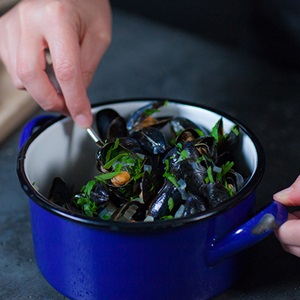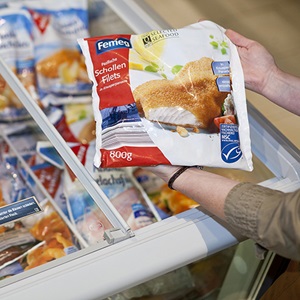What is halibut?
Halibut are a group of three species of large flatfish in the right-eye flounder family. They include the Pacific, Atlantic and Greenland halibut. They live and feed on the bottom of the seabed. They can be found in the North Pacific, North Atlantic and Artic Oceans.
Greenland halibut, often called turbot, is snowy white and tender with large flakes. The meat is sold smoked in some European countries. It is also served as sushi or in the Faroe Islands, as a creamy fish salad.
All halibut can be baked, deep-fried, poached, steamed or grilled. Cooked from fresh, the meat has a clean taste and requires little seasoning. It is rich in omega-3 fatty acids, containing lots of micro-nutrients and is a high-quality source of protein.
Pacific halibut is a traditional source of protein for Alaska Native and Canadian First Nation coastal communities. The Haida people in the coastal bays of British Columbia have an old saying “when the salmonberries are ripe, the halibut are in the kelp”. This reveals their knowledge about the time and place for successful fishing.
Is halibut sustainable?
Halibut carrying the MSC label is certified as sustainable. MSC labelled halibut comes from a fishery that has been independently assessed to the MSC Fisheries Standard. This means the stocks are well managed and impact to the environment and other species is minimised.
Every supply chain business handling MSC seafood must meet the MSC Chain of Custody Standard, which ensures that fish and seafood sold with the blue label has come from fishing certified as sustainable against the MSC Fisheries Standard. Halibut from MSC certified fisheries are caught using an array of methods such as hooks and lines, longlines, gillnets and bottom trawling.
Bonus fact
The Atlantic halibut is one of the world’s largest flatfish, reaching up to 4.6 metres in length. The largest Atlantic halibut ever recorded was taken off Cape Ann, Massachusetts and weighed around 280 kilograms.
A foodie's guide to halibut

Sustainable seafood recipes
Chefs and seafood lovers from around the world share quick and tasty ways of cooking MSC certified seafood.

10 reasons to choose the blue fish label
By choosing seafood with the MSC label you're helping to protect oceans, livelihoods and fish for the future.

